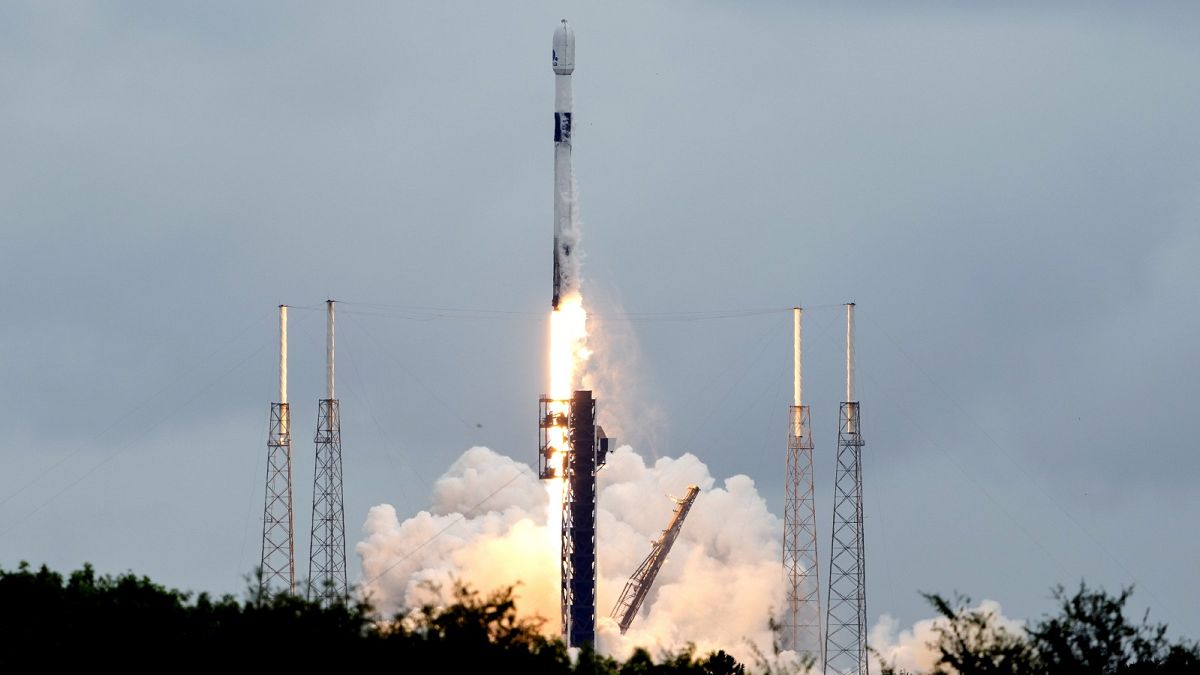Hera will survey the asteroid deflected by NASA’s DART spacecraft, the results of which could lay the foundation of Earth’s planetary defence system.
A European mission that could prove fundamental to the future survival of life on Earth lifted off from Cape Canaveral in Florida on Monday.
Hera, the European Space Agency’s (ESA) first planetary defence space mission, launched on board a Space X Falcon 9 rocket and is bound for the asteroid Dimorphos 195 million km away.
The Falcon 9 launcher carrying the Hera spacecraft took off at 10.52am ET (4.52pm CET) and successfully deployed its solar panels an hour later.
Hera’s main aim will be to survey the impact site of NASA’s DART spacecraft which was purposely crashed into the surface of the asteroid two years ago to deflect its course.
DART was the first human-made object to alter the trajectory of a celestial body in the first test of the ‘kinetic impact’ technique of asteroid deflection.
Depending on the observations the European-led mission will make of the impact site, as well as the survey it will make of the asteroid’s composition, it could mean the technique could form the basis of a future planetary defensive system with far-reaching implications for life on Earth.
“The Hera mission, together with DART and the Japanese Space Agency, shows that we are working globally. It’s a planetary defence, it’s a global endeavour. And this project, this collaboration, is really the perfect example of what humanity can achieve when we work together,” Ian Carnelli, the Hera Project Manager at ESA, told Euronews Next prior to the launch in Cape Canaveral.
It will take two years for the craft to reach Dimorphos and the larger asteroid it orbits, Didymos, swinging past Mars on its way.
‘Fastest planetary mission done in Europe’
The four-year-long Hera project drew together 18 countries in Europe as well as 70 companies across the continent and the Japanese Space Agency, or JAXA.
“It’s the first planetary defence mission, but it’s also so far the fastest planetary mission that has been done in Europe. So it shows also that things can be done on a on a on a quick pass, which is especially necessary if we will have to deflect an asteroid one day,” Michael Kueppers, Hera Project Scientist at ESA, told Euronews Next.
The mission launch faced significant obstacles, including the grounding of the Falcon 9 after a malfunction was detected during the landing phase of the reusable second stage of the rocket during its last operation.
The rocket was authorised to return to flight for the ESA mission by the US Federal Aviation Authority (FAA) on Sunday as there was no planned reentry of the second stage as part of the Hera mission.
The weather had also cast the launch in doubt due to the incoming path of Milton, a category 5 hurricane, which is expected to make landfall in Florida on Wednesday.
In the event, the weather conditions improved significantly enough to give the go-ahead for the launch.
“We had, as you’ve seen, the horrible weather throughout the morning. We started with a 30 per cent chance of launch and then we were in constant contact with the Space Force weather team and of course, the SpaceX weather team. That was basically, up to an hour from launch, the main concern,” Carnelli told journalists in a post-launch briefing.
“We were monitoring the weather almost every five minutes. There were a couple of moments of horror when a small storm actually went through the 10-mile (16 km) radius of the base and was pouring rain as we were fuelling [the Falcon 9 launcher],” he added.
“But we we were told that actually it was going to go through very fast and it did, fortunately”.
The spacecraft is expected to reach Dimorphos in October 2026 when its two CubeSats – small satellites which are of standard size – will be deployed and begin gathering data.
“I think we should all be proud of what we achieved today. It’s it’s a great moment for ESA. It’s a great moment for European industry in Europe in general. So I’m really happy,” Carnelli said.

